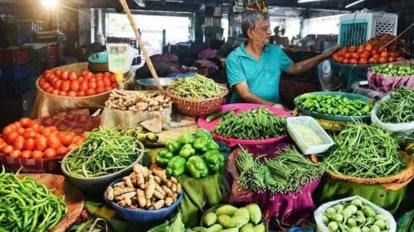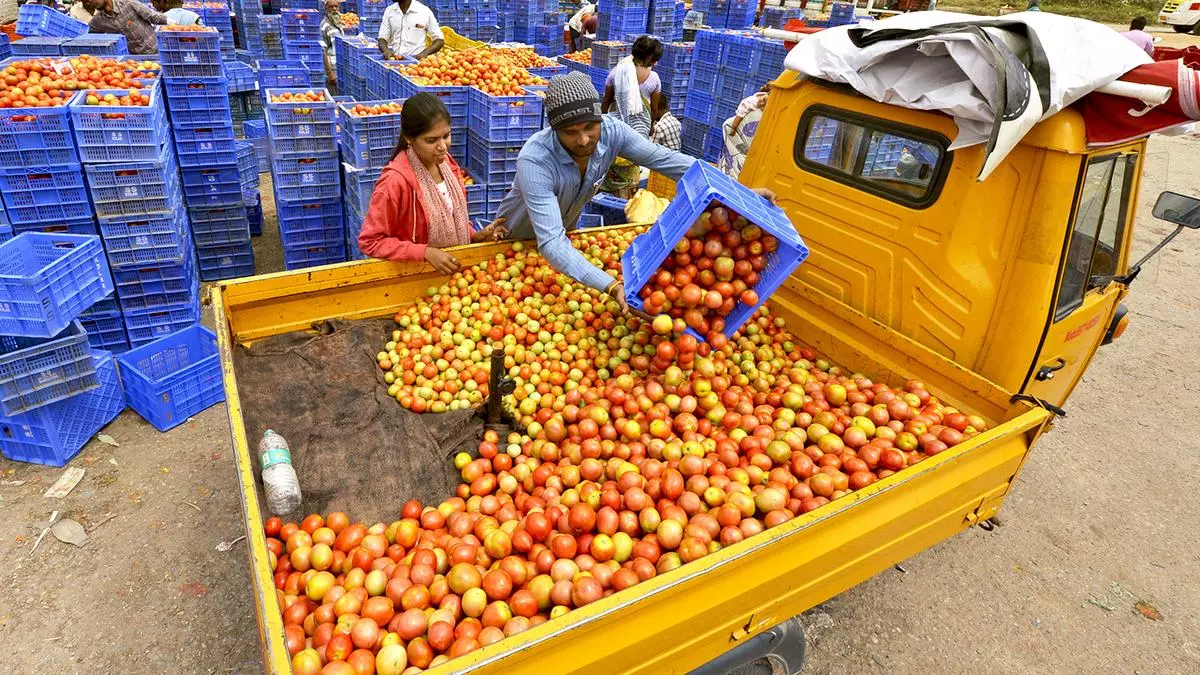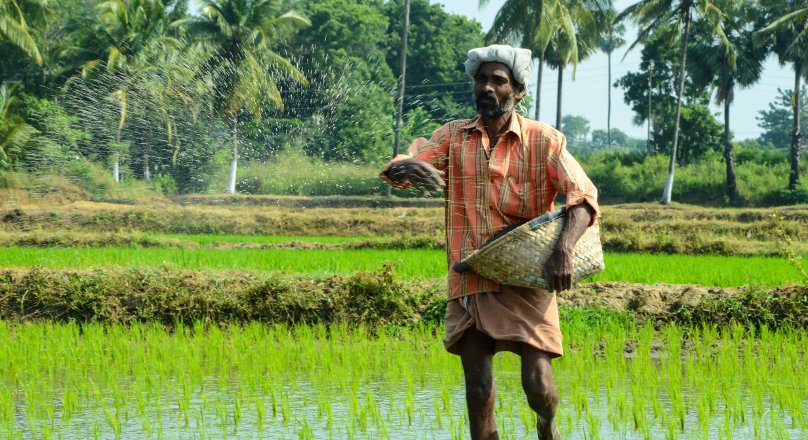Agriculture is the backbone of any nation, feeding and providing nutrition to billions of people around the world. The irony is that it is the farmers-the very producers themselves-who often get the minimum share of what consumers pay for their produce. This difference is even more extreme for fruits and vegetables, growers get only about one-third of less of the final retail price paid by the consumers. This article examines why this difference does exist, what contributes to it, and the possible solution to the disparity.

The Difference: Why Do Farmers Get So Little?
It is due to many complex variables that farmers receive just about one-third of the retail price for fruits and vegetables-this being the disturbing statistic. An overview of the main reasons follows, along with an explanation.
a. Middlemen and Supply Chain Intermediary
One major reason farmers are left with such a small share is the existence of many middlemen between farm and consumer. Wholesalers, transporters, and retailers are examples of middlemen that attach their markup to the price of the goods. There is an inverse relationship between price and farmer share with respect to middlemen involvement. The more involvement, the higher the price, but the farmer’s share remains more or less the same.
b. Costs of transportation and distribution.
Transport of the perishable goods from the farmland to the market is expensive. The costs involve fuel, refrigeration, and packaging to keep the fruits fresh. Due to the expenses involved in logistics problems are too costly; a lot of the extra expenses is passed down to the customer without necessarily improving the farmer.
c. Market Monopoly and Exploitation
Most of the regions dominated by monopolies in buying farm produce. The cartels or oligopolies often dictates what price farmers should sell their produce at, thereby leaving farmers with little bargaining powers. Sometimes monopolies minimize prices while retaining fat profit margins at the expense of the consumers.
d) Seasonality and price fluctuation.
The supply and demand dynamics of fruits and vegetables change drastically with seasons. In times of surplus, farmers are obliged to sell cheaper due to oversupply, while the retailer may still keep a high price for the customer. In times of shortage, though the farmer’s price increases, the disproportionate rise in retail pricing means the customer pays much more at the cost of low profit for the farmer.

Pricing Structure Breakdown
To understand how little farmers receive, consider the average pricing structure for fruits and vegetables. If the buyer pays $3 for one kilogram of tomatoes, to what would that money go?
- Farmer’s share: Around $1, or 30-35%.
Transportation costs around $0.50 to $0.75, 10-15% of the price.
Wholesale and intermediary margins are at $0.75 to $1, or 25-30%.
Retailer margins are from $0.75 to $1, or 25-30%. - The above structure is indicative that while the ultimate consumer pays a lot more for his produce, most of it goes to the middlemen, and very little is accrued to the farmer who toils for several months to produce the crops.
The consequence of small farm income
The little money which farmers make through their sales of their produce has dire consequences. These are felt both in an individual and societal level.
a. Poverty and indebtedness of farmers.
Low incomes are perpetuating many farmers into poverty cycles. The inability to meet production costs and also to reinvest in better agriculture methods is making many farmers to fall into debt. Agricultural indebtedness has become a serious problem in countries such as India and Pakistan, which contributes to mass discontent and even suicide.
b. Lower Agricultural Investment
This means that when farmers are not being paid well for the work they do, farmers will be less likely to invest in advanced agricultural techniques, irrigation systems, or even high-quality seeds. This sets up a cycle of low productivity, low yields, and higher vulnerability to climate change impacts.
c. Increased Rural-Urban Migration
This has made the farming economy hard; thus, farmers are moving from the rural areas into the cities seeking greener pastures. This further adds to overpopulation, unemployment, and other socioeconomic issues in the cities while causing depopulation in the rural areas.
d. Food security challenges
If the farmers are not adequately motivated to produce on account of poor pay, the country may suffer food security problems. Food systems cannot be said to be truly sustainable when producers are not given good returns for their work.
The Role of Retailers and Supermarkets
All this has been exacerbated by the presence of major chains of groceries in industrialized economies. Given the retailers’ negotiating powers with suppliers, inclusive of the farmers, the former can negotiate for lower rates. Most supermarkets are usually the final point of sale for farm products and, being competitive, always strive to raise the profit margin. But the effort to make the products cheap usually occurs at the expense of the farmers.
At the same time, the rise of international grocery chains and their immense networks have pushed local farmers to compete against cheaper imports, lowering the prices they can charge even further.
Possible Solutions to Close the Gap
There are many ways out of this problem of farmers receiving only one-third of the price paid by the consumers. Various steps can be taken to remove gaps and improve the economic status of the farmers.
a. Direct-with-Consumer Models
One increasingly popular option involves the development of direct-to-consumer sales methodologies. Farmers’ markets, community-supported agriculture, and online marketplaces all allow farmers to cut out many intermediaries and sell their produce directly to consumers, keeping a larger share of the profit. This may also be beneficial to people who would like to support local farmers and learn more about where their food originates.
b. Fair Trade and Ethical Supply Chain
Agricultural policies on Fairtrade raised farmers’ incomes by ensuring the minimum price setting for their produce. By developing ethical supply chains, customers are given opportunities for selecting companies that have respect for paying farmers rightly. Certification and labeling programs have helped make customers more sensitive to the problem.
c. Strengthening Farmers’ Cooperatives
Farmers can organize themselves into cooperatives that give them greater bargaining strengths in the markets. They share resources and are able to drive down input costs for products like seeds and fertilizers while commanding better prices for their produce. Cooperatives can also alleviate exploitative intermediaries by enabling the farmers to sell their products directly to retailers or final customers.
d. Government Interventions and Policy Reforms
Equitable prices to the farmers could also be partly achieved through government intervention: through subsidies, price support, and adoption of farmer-friendly procurement laws, the gap in income can be lessened. Other potential roles of governments include investing in infrastructure like transportation and cold storage, which helps reduce post-harvest losses and costs of logistics.
e. Encouraging Sustainable Agriculture Practices
Organic farming, crop diversification, and agroforestry are some of the sustainable agricultural practices that give farmers an opportunity to have access to premium markets where consumers pay a higher price for environmental goods. Long-term sustainability and reduction in dependency on synthetic inputs lessen the costs of these methods.
Closing the Gap between Farmer and Consumer
That farmers barely get one-third of what consumers spend to buy fruits and vegetables is indicative of a structural problem in the agriculture supply chain. The major contributors could be middlemen, transportation expenses, and market monopolies, but the end effect is a vicious cycle of poverty for many farmers and higher consumer prices. As such, by encouraging direct-to-consumer sales, fair trade and cooperatives, and rewriting governmental regulations, we may actually be moving in the direction of a more equitable system, whereby farmers are compensated fairly for their work.
It means, basically, knowing where exactly it comes from and who is actually profiting from it as a consumer. Supporting ethical supply chains and farmers’ markets can go a long way toward ensuring those people who work so hard to feed us get properly remunerated for this.





